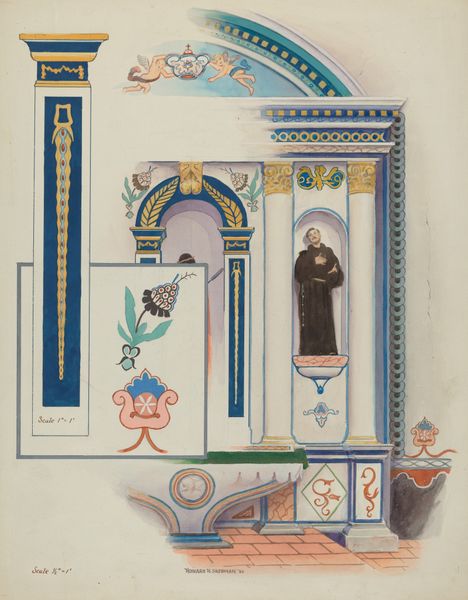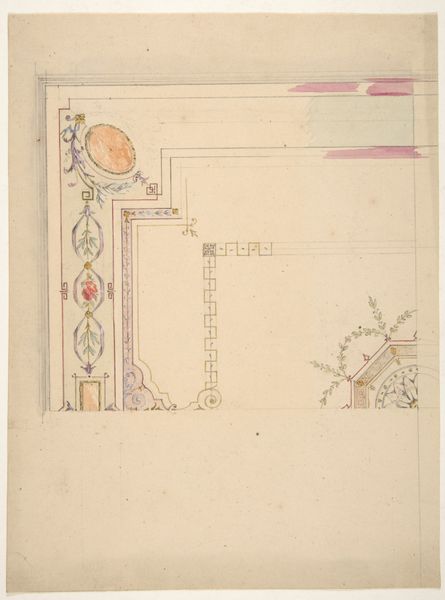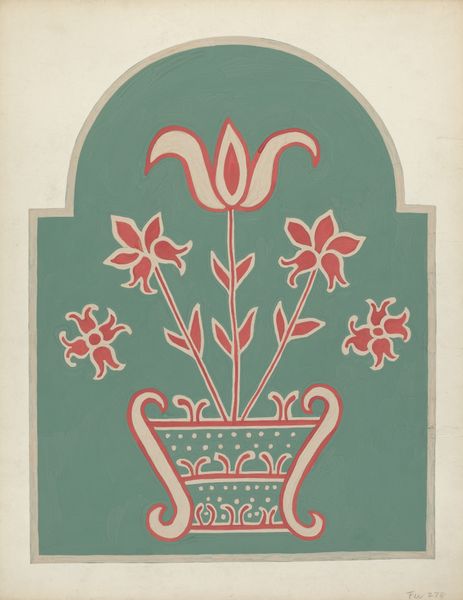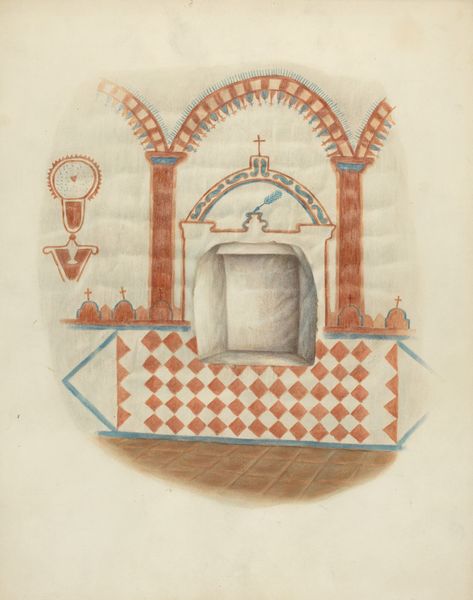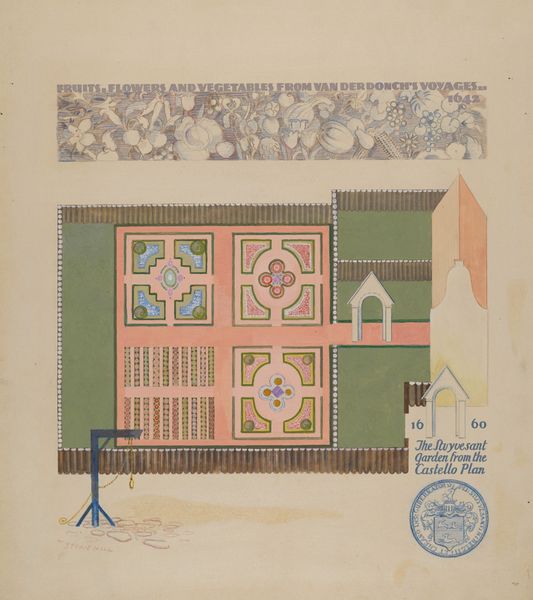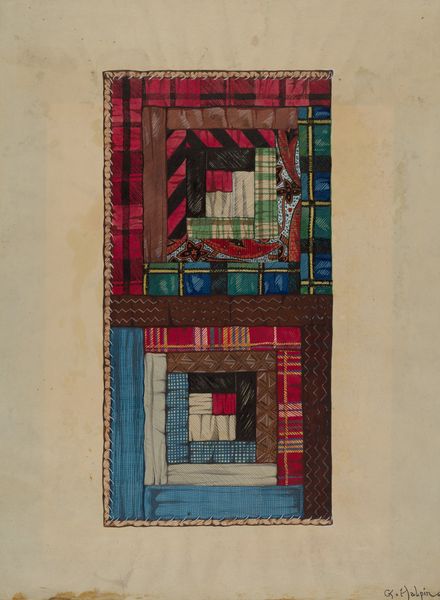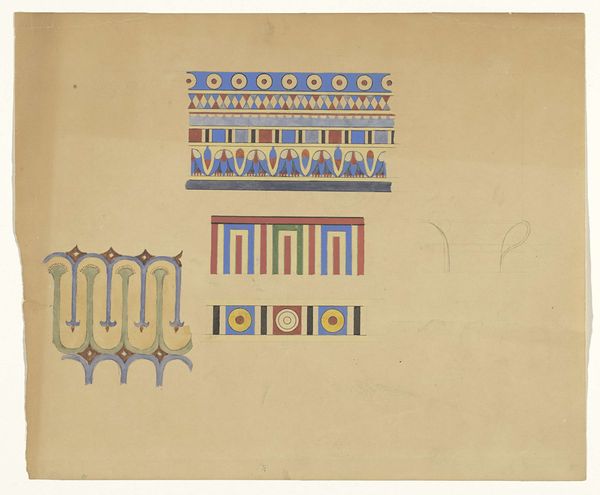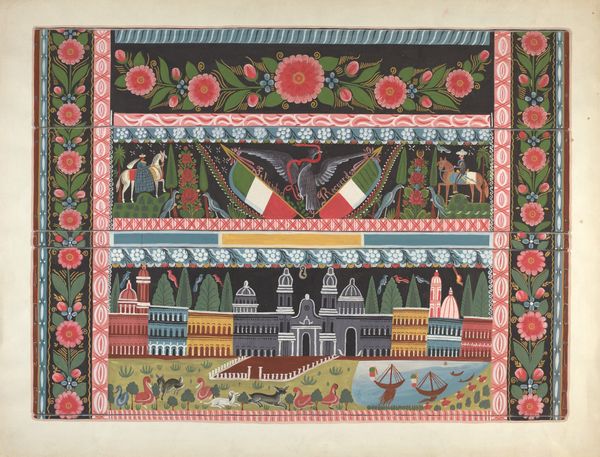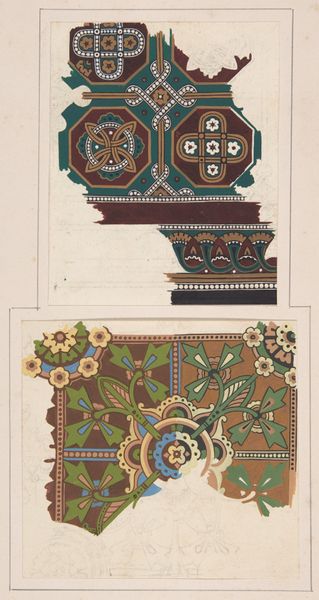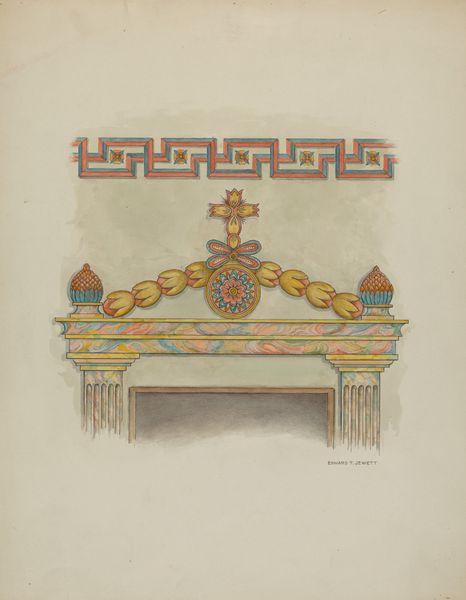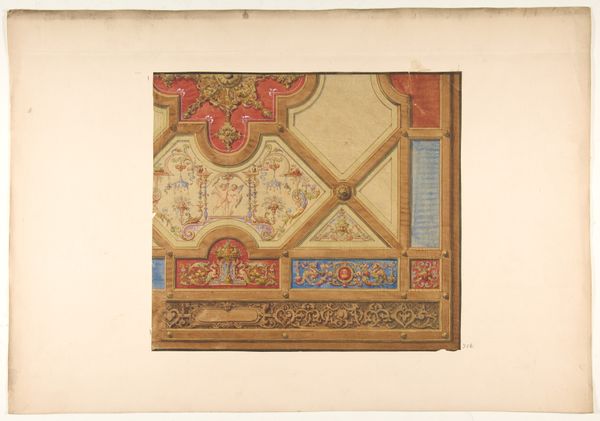
drawing, watercolor, architecture
#
drawing
#
water colours
#
watercolor
#
geometric
#
watercolour illustration
#
watercolor
#
architecture
Dimensions: overall: 35.4 x 27.8 cm (13 15/16 x 10 15/16 in.) Original IAD Object: Scale 13/16"=1'
Copyright: National Gallery of Art: CC0 1.0
Editor: Here we have Howard Sherman's "Pilaster and Sidewall in Church San Luis Rey Mission," a watercolor painting from around 1936. It's such an interesting, almost schematic view of architectural details. I’m curious, how does this fit into the broader context of art depicting indigenous spaces? Curator: That’s a great starting point. This work presents us with several layers to unpack. How does Sherman’s choice of watercolor impact our understanding, given its historical association with documentation? What statements might Sherman be trying to make? Editor: Well, watercolour feels less…imposing, maybe? More like a record or study than a grand statement. So, it’s not necessarily idealising the space. Curator: Precisely. We must consider the context of the San Luis Rey Mission. These missions had a complicated relationship with the indigenous population. Sherman seems to present an elevation or architectural rendering but strips away the narrative often associated with mission art. Does that diminish a grand sense of triumph? Editor: Definitely. It feels very focused on the geometric details and patterns. It’s almost detached, viewing the Mission as an interesting visual object. It makes me wonder what his intentions were with this piece. Curator: Exactly! And who was this "rendering" for? The intended audience shapes our understanding. Is it an objective historical artifact, a reflection on Indigenous American art movements, or something else entirely? Consider the public role of art within the framework of power dynamics. What narratives are highlighted or concealed in this depiction? Editor: So it sounds like we should focus less on Sherman’s intent and more on how society and institutions at the time viewed and wanted to display these indigenous spaces and motifs. I will be considering those cultural dynamics, it's a different perspective than I had expected. Curator: Precisely! This allows us to consider the intersection of art, power, and public memory and its historical impact on culture.
Comments
No comments
Be the first to comment and join the conversation on the ultimate creative platform.
